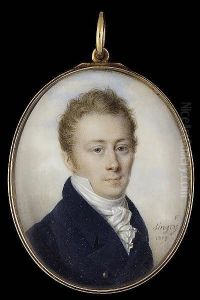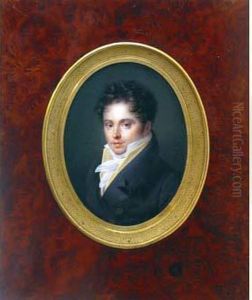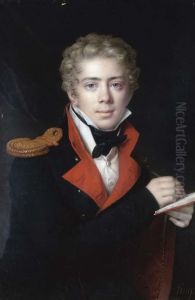Jean-Baptiste Singry Paintings
Jean-Baptiste Singry was a Swiss painter born in Geneva in 1782. He is most often associated with the Neoclassical movement, which was prevalent in Europe at the time of his artistic activity. Singry's work is characterized by its adherence to classical principles of beauty, harmony, and proportion, inspired by the art and architecture of ancient Greece and Rome.
After receiving initial artistic training in his hometown, Singry furthered his studies in Paris, which was then the epicenter of Neoclassical art. He was a contemporary of famous Neoclassical artists such as Jacques-Louis David and Jean-Auguste-Dominique Ingres. While in Paris, Singry would have had the opportunity to absorb the teachings of these masters and witness the transformation of French art in the wake of the French Revolution and the Napoleonic era.
Although Singry is not as widely recognized as some of his contemporaries, his work contributed to the rich tapestry of Neoclassical painting in the late 18th and early 19th centuries. His paintings often featured subjects drawn from classical mythology and history, rendered with an emphasis on clarity, order, and idealized beauty. These works were in line with the Neoclassical pursuit of moral virtue and civic ideals, as artists of the time often looked to the classical past for models of heroism and ethical conduct.
Jean-Baptiste Singry's career was relatively short, as he died at the young age of 42 in 1824. Despite his premature death, he left behind a body of work that contributes to our understanding of Neoclassical art and its development during a period of significant social and political change in Europe. His paintings are preserved in various art collections and continue to be studied for their representation of Neoclassical aesthetics and ideology.


